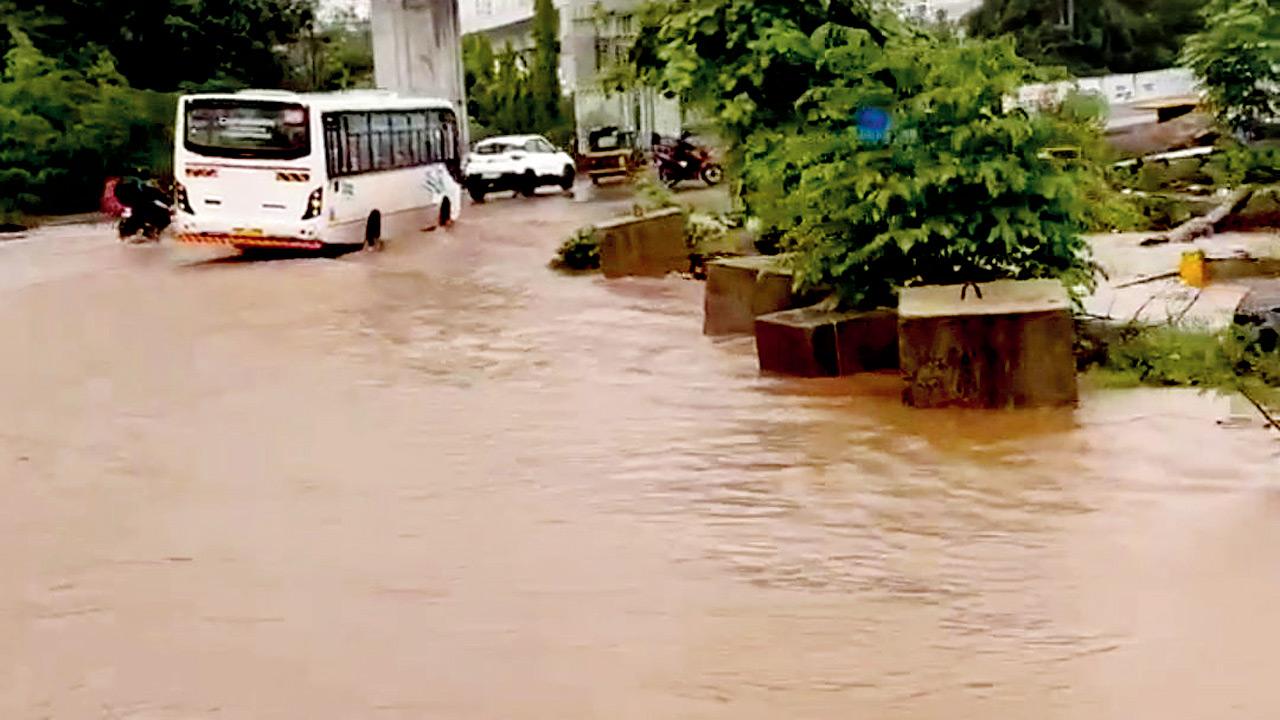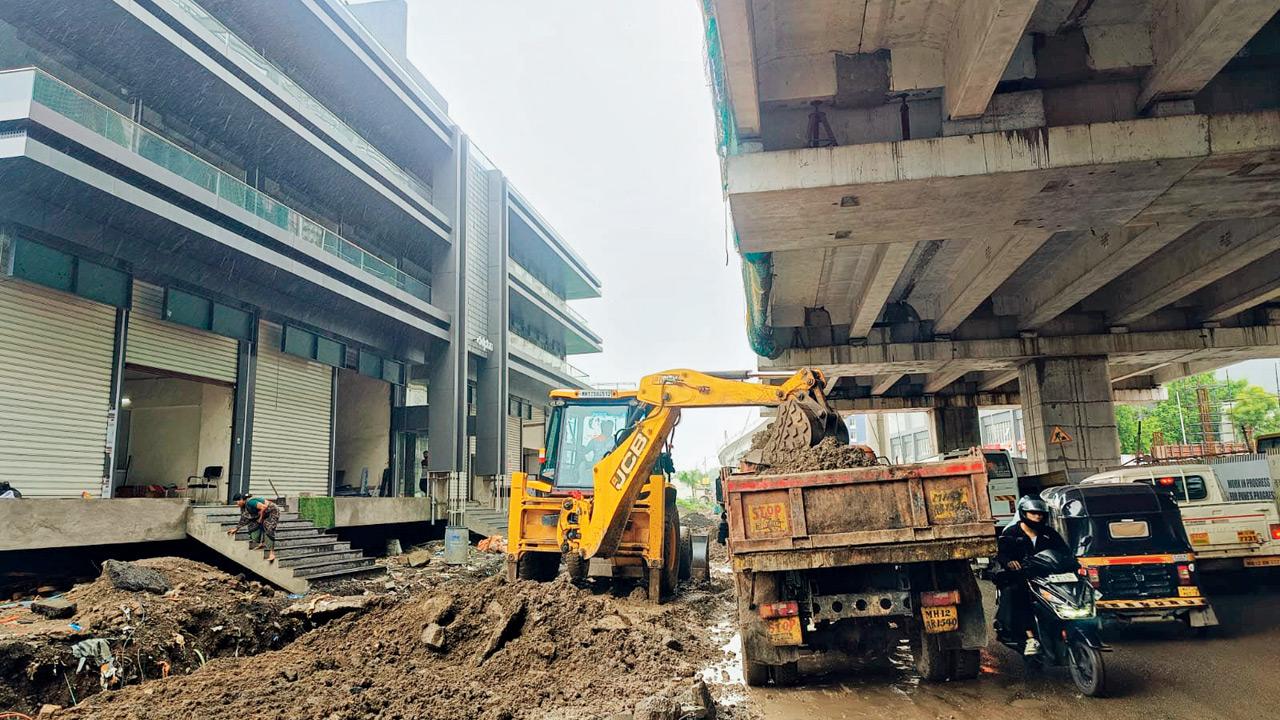The intense rainfall is linked to a low-pressure system over the east-central Arabian Sea and the North Konkan coast, pulling in significant moisture and triggering heavy showers across western Maharashtra. Several parts of Pune recorded light to moderate rain since early Thursday morning, making roads dangerously slippery

Vehicles make their way through the flooded roads of the IT park. Pics/By Special Arrangement
Torrential showers turned Hinjawadi IT Park into a virtual water park on Thursday. Several arterial roads were submerged, and traffic came to a standstill. The chaos unfolded even as the annual Palakhi procession began its journey through the rain-soaked streets of Pune. The Hinjawadi IT crowd was stalled in traffic. Roads turned into rivers, severely hampering the movement of vehicles and office-goers. In response, Pune Metropolitan Region Development Authority (PMRDA) and the Maharashtra Industrial Development Corporation (MIDC) have launched urgent remedial measures.
A high-level meeting, chaired by PMRDA Commissioner Dr Yogesh Mhase, was held to coordinate efforts. Key officials, including Additional Metropolitan Commissioner Deepak Singla, MIDC Joint CEO Vijay Rathod, and PMRDA Chief Engineers Rinaz Pathan and Nitin Wankhede, are supervising the work. SD Sanap, senior scientist at IMD, told mid-day, “The Pune city area has been issued a yellow alert only, but the ghat sections have received a red alert for Thursday. The situation may return to normal from Friday onwards.”

PMRDA in action mode
The intense rainfall is linked to a low-pressure system over the east-central Arabian Sea and the North Konkan coast, pulling in significant moisture and triggering heavy showers across western Maharashtra. Several parts of Pune recorded light to moderate rain since early Thursday morning, making roads dangerously slippery and disrupting daily routines. Travellers are advised to avoid ghat roads, which may become hazardous due to landslides and poor visibility.
All zonal control rooms under PCMC are operating round-the-clock, with dedicated teams working in three shifts. Critical areas with a history of water accumulation are being closely monitored by quick response teams (QRTs) equipped with pumps, rescue tools, and emergency manpower. Fire and emergency services have deployed over 15 rescue boats and 200 life jackets across zones. Flood-prone zones near the Pavana and Indrayani rivers are under active surveillance.
PCMC Commissioner Shekhar Singh assured citizens that the civic body is well-prepared to manage any eventualities. “PCMC has anticipated such conditions and deployed teams, equipment, and control mechanisms accordingly. Citizens are requested to stay alert and contact the nearest zonal office or control room if needed,” Singh said.
To manage health risks, PCMC’s health teams are on alert for waterborne diseases, and disinfection measures are underway in vulnerable areas. Temporary shelters have been identified for possible relocation. The water supply and electrical departments are inspecting underground and surface infrastructure to ensure public safety. With the Sant Dnyaneshwar and Sant Tukaram Palakhi processions entering PCMC limits, civic teams are working in mission mode to ensure a smooth and safe passage for Warkaris.
 Subscribe today by clicking the link and stay updated with the latest news!" Click here!
Subscribe today by clicking the link and stay updated with the latest news!" Click here!










